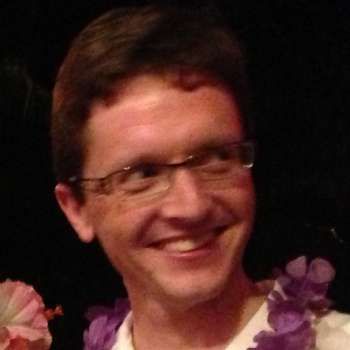In the program booklet, conductor Pietari Inkinen enigmatically remarked "What a fascinating challenge it is to perform Wagner’s music in a country unburdened by the cultural habits that have become attached to this great work!" While performances of Wagner’s music dramas are indeed far from routine events in Australia, Wagner-enthusiasm here is of long origin: commenting on the response to the national première of Tristan und Isolde in 1912, musicologist Kerry Murphy wrote: "Australian audiences, in particular Melbourne audiences, were rabid Wagnerites". With this revival of the bicentenary Ring, a concert version of Parsifal next year and rumours of other productions in the offing, Opera Australia is beginning to tap into this repertoire more regularly. Thankfully, home-grown singers seem to have a good feeling for the style, as do the instrumentalists.
What does one expect of a Ring production nowadays? A glib answer might be "anything but horned helmets". Traditional, quasi-naturalistic stagings are now deeply untraditional. Wagner’s tetralogy has proved robust enough to support a panoply of different stagings in the post-War era: minimalist-symbolic (Wieland Wagner), anti-capitalist (Chereau), futuristic (Kupfer), feminist (Holten), or technological-realist (Lepage), to name but some of the better known.
Any attempt to characterise Neil Armfield’s vision of the work after only seeing the ‘preliminary evening’ would be premature, but traditional it certainly was not. The only sop towards a quasi-realist aesthetic was the painted backcloth during Scene 2 (based on an 1896 Bayreuth design), a pastoral vista with a temple-like building in the distance. This turned out to be a classic misdirection: the entry of the giants, bursting through the backcloth on cranes, undeceived those who might reasonably have thought it to represent Valhalla.
In terms of design, Robert Cousins and Alice Babbidge have made old-school show-business visuals particularly prominent. The Rhinemaidens are cabaret dancers, all abbreviated costumes, sheer stockings and gaudy headdresses; a magician’s disappearing cabinet and glamorous assistant were brought on for the Tarnhelm transformation scenes; and the final rainbow bridge was a phalanx of Marilyn Monroes with variously coloured feathered ‘wings’. Busby Berkeley meets Bayreuth.
If there was any specifically Australian accent, it was in the opening scene, where actors clad in bathing costumes represented the Rhine. As could be seen in the vast sloping mirror above the stage, they gradually moved from supine to standing positions as the famous four-minute opening E flat major chord grew progressively more agitated.
Inkinen’s approach produced the antithesis of the full-blooded, bellowing cliché it can be in other hands. He was highly sensitive to the singers and kept the orchestra in check to ensure that the voices almost always came through, only opening the throttle in the purely instrumental sections. His tempi were fairly brisk too, the whole clocking in at around two and half hours. The effect was to humanise the music drama: the lengthy dialogues in Scene 2, for instance, felt pleasingly streamlined. There might be some who missed a certain epic quality from the production, but the compensations outweighed this.
Among the singers, the palm has to go to Warwick Fyfe, who was simply mesmerising as Alberich. Stripping to his underwear for his failed attempt to seduce the Rhinemaidens, he was by turns peevish, pathetic and terrifying; and still more effective in Scene 3 as the tyrannical overlord of the Nibelungs, insecure enough to be tricked by Loge. Fyfe’s stentorian delivery of Alberich’s despairing "O Schmerz" and still more the famous curse in Scene 4 showed him to be an echt-Wagnerian.
His opposite, James Johnson as Wotan, came off second best, both in terms of dramatic energy and vocal heft. Johnson, a late draft into the Melbourne cast, played Wotan a decade ago in the celebrated Copenhagen Ring. His Wotan here was already world-weary, complemented by a gritty tone. The true test of his mettle is yet to come in Walküre.
Virtually all the other performers were commendable. After a slightly nervous start, Andreas Conrad was impressive as Loge; more urbane than impish, but vocally pleasing. Where others have resorted to vocal caricature, Graeme Macfarlane actually sang the part of Mime, which augurs well for his bigger role in Siegfried. James Egglestone made the most of his cameo moments as Froh, while Michael Honeyman was a dignified Donner (although his "Heda" solo might have had a little more macho edge).
Jacqueline Dark was a resplendent and assured Fricka, and Hyeseoung Kwon emoted convincingly as the nearly-bartered Freia. Liane Keegan’s entry as Erda wasn’t as arresting as it can be, but she had lovely top notes. The trio of Rhinemaidens (Lorina Gore, Jane Ede, and Dominica Matthews) gave us attractive solos and tight ensemble singing. Both Daniel Sumegi (Fasolt) and Jud Arthur (Fafner) impressed as the giants. A good beginning in Wagner’s Ring is less than a quarter of the battle, but it has been a big win so far.




